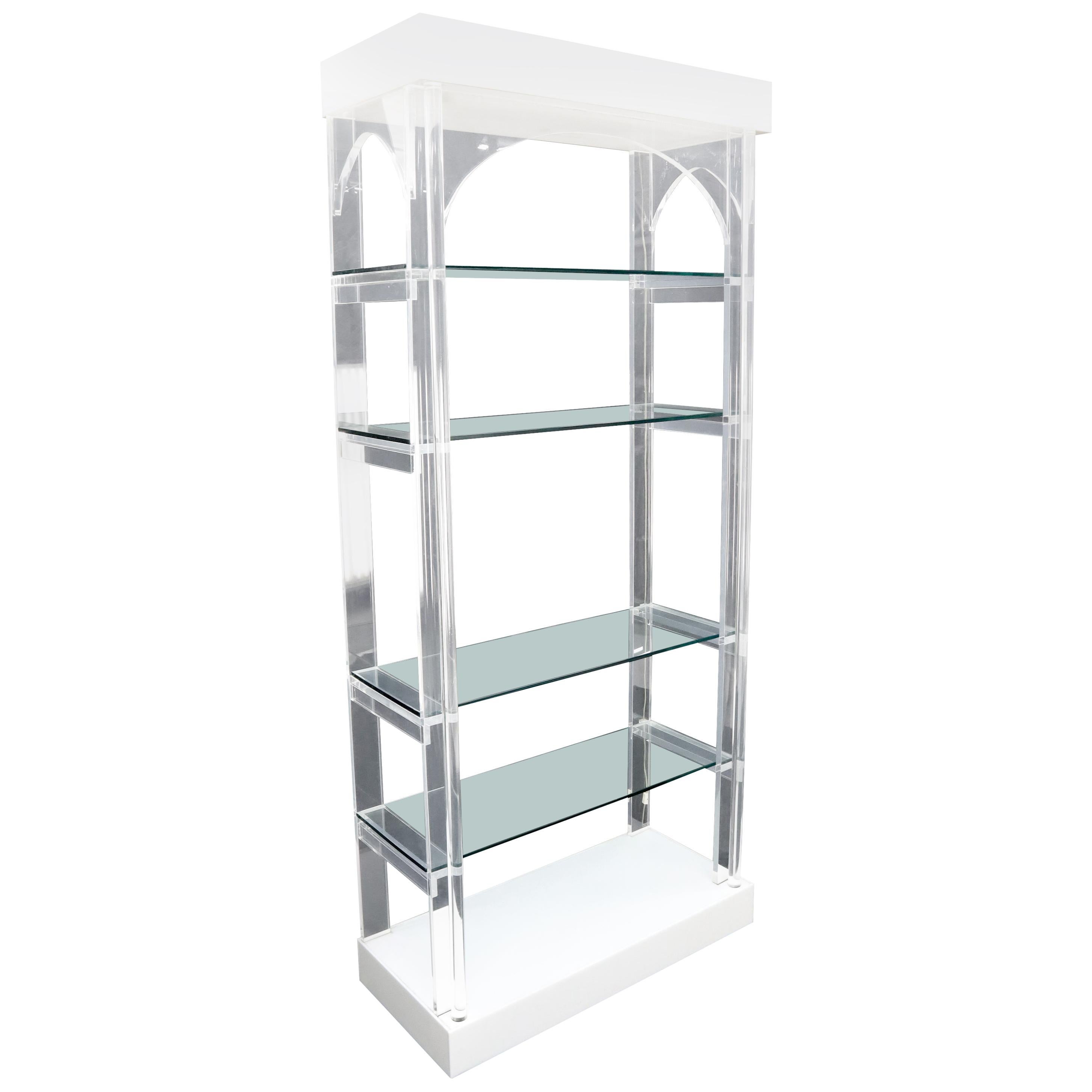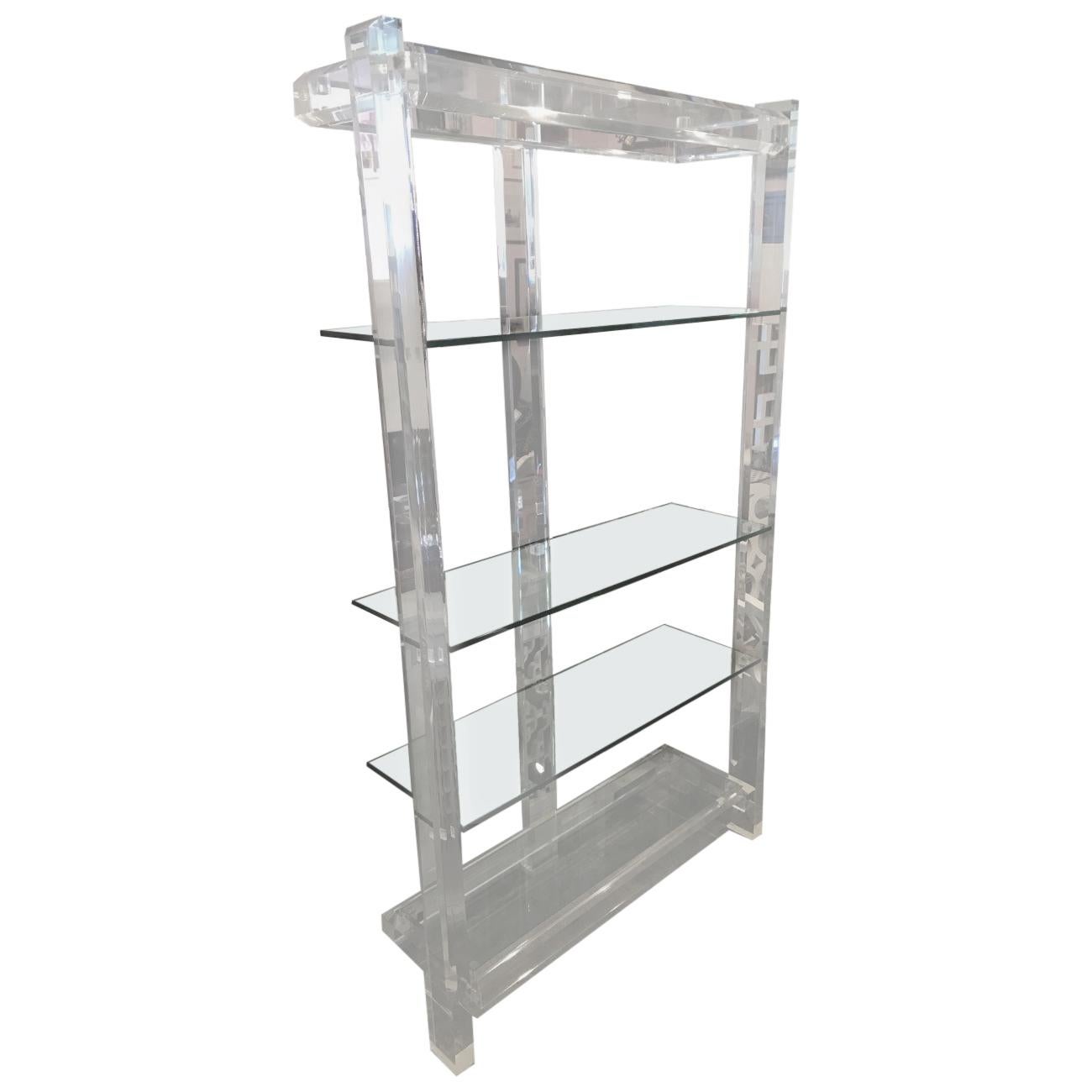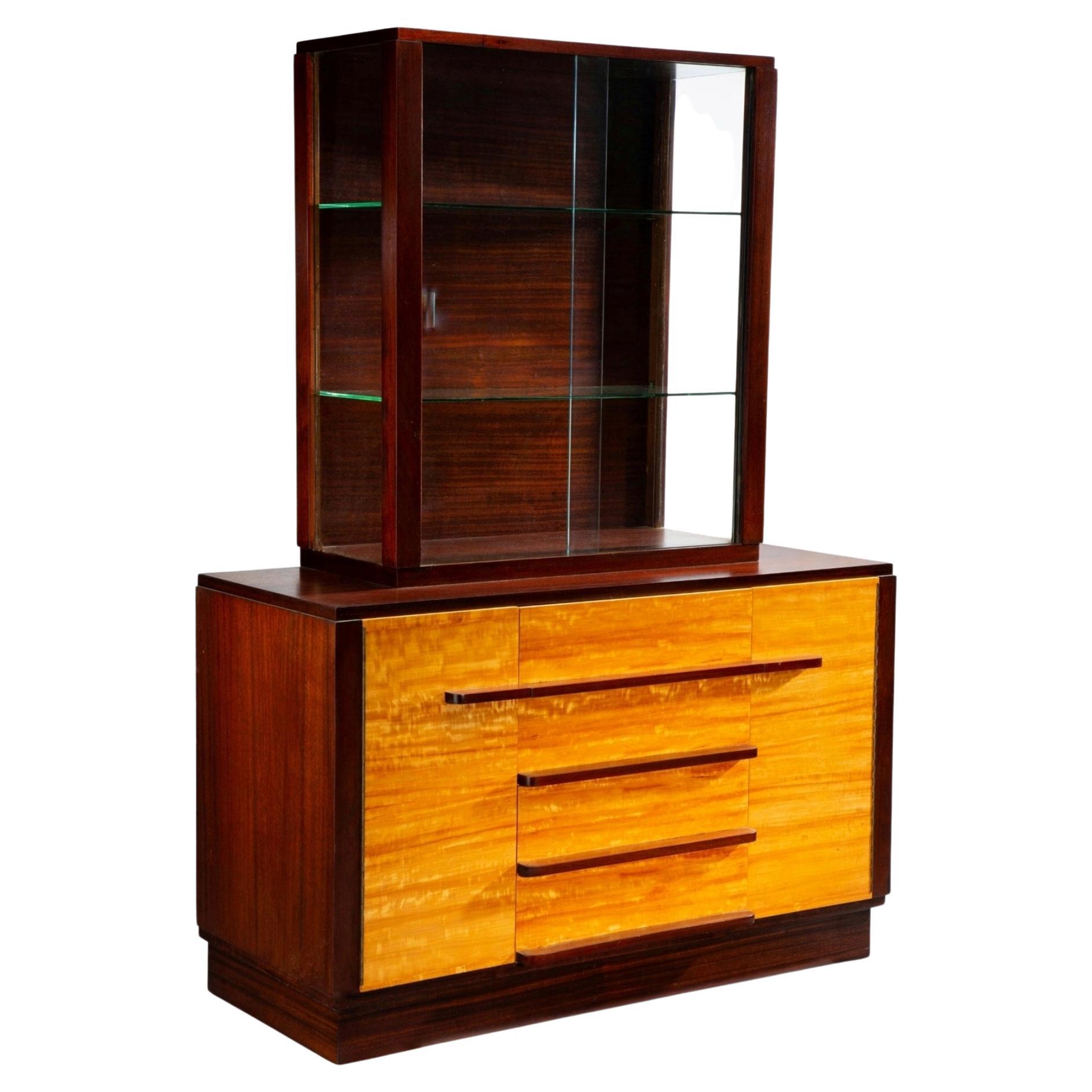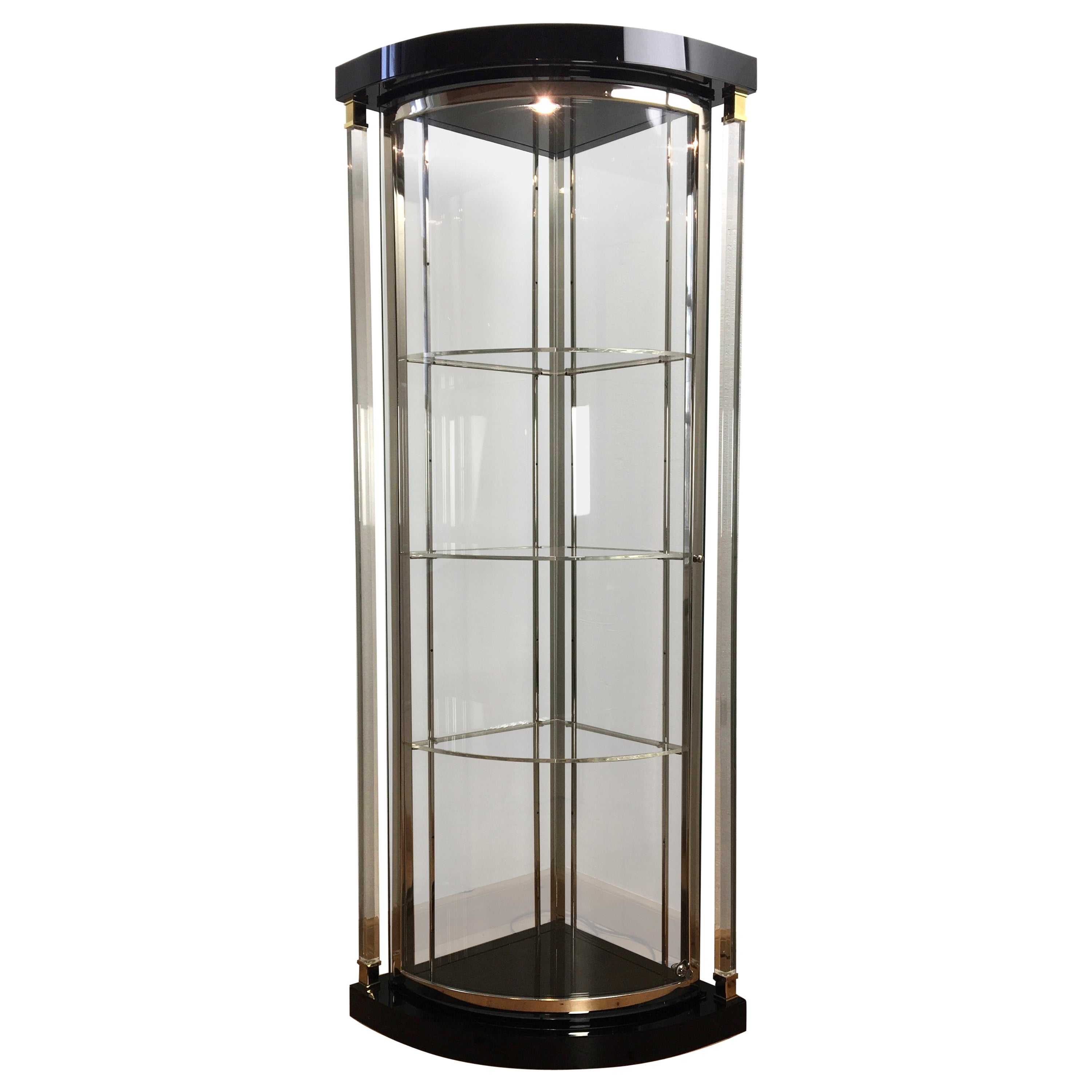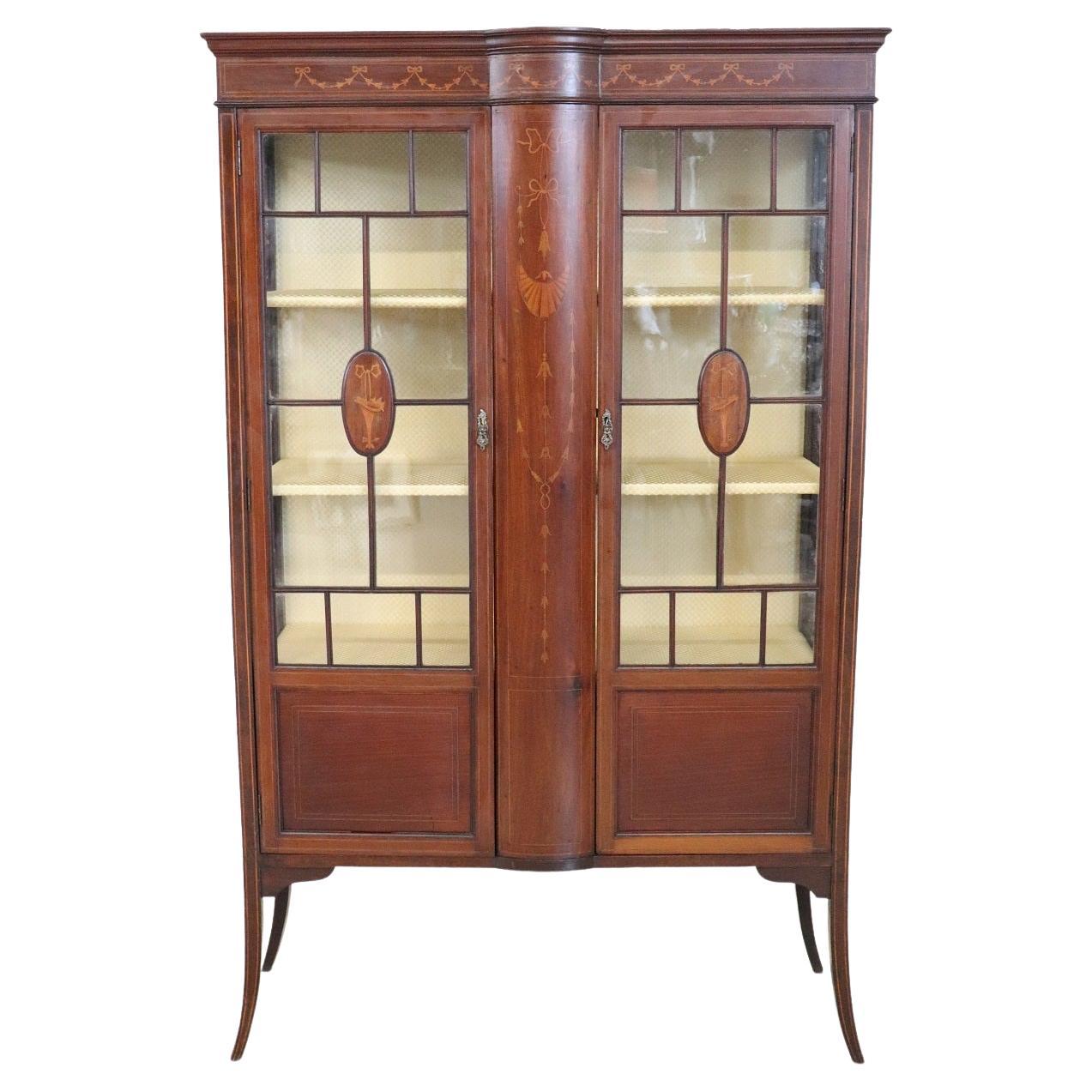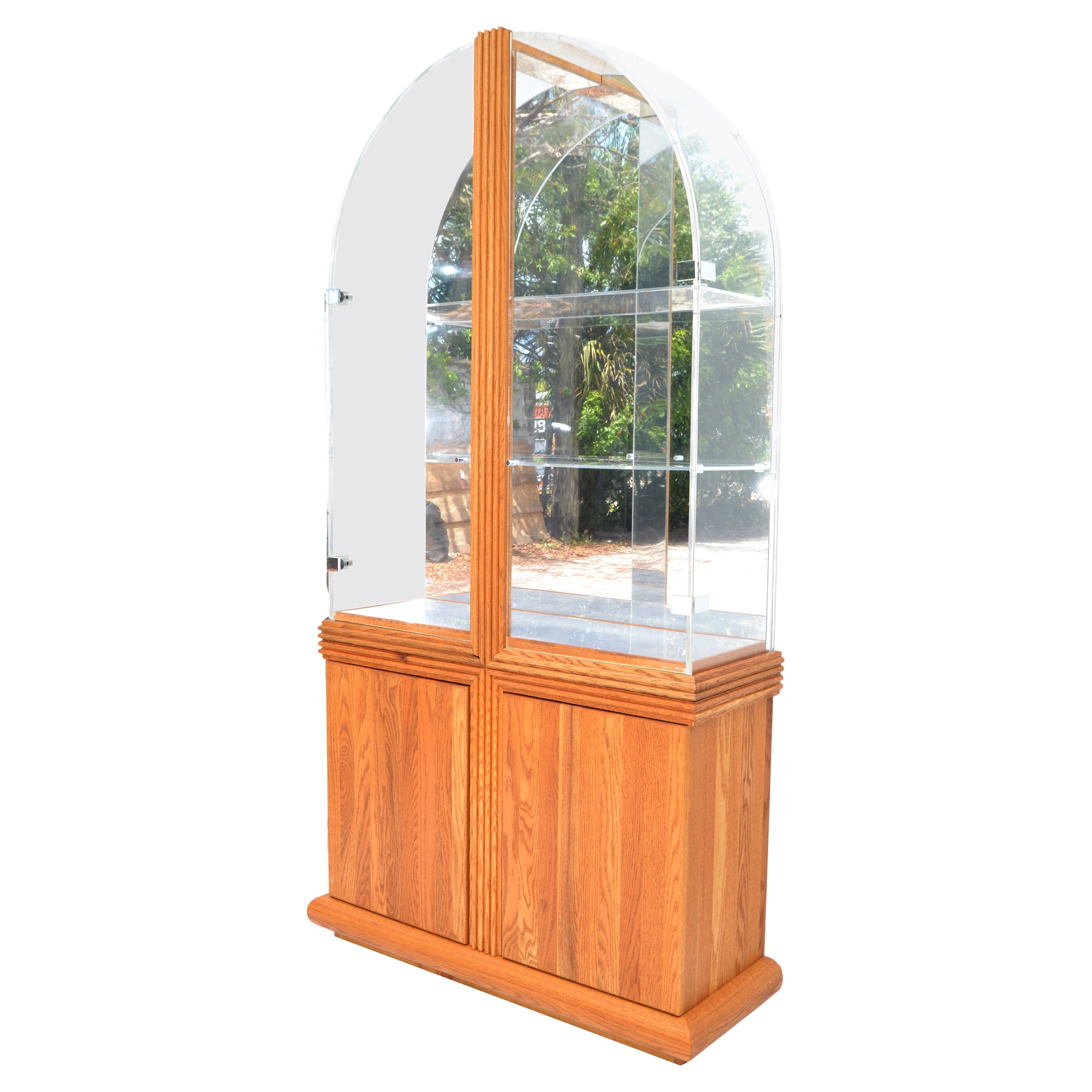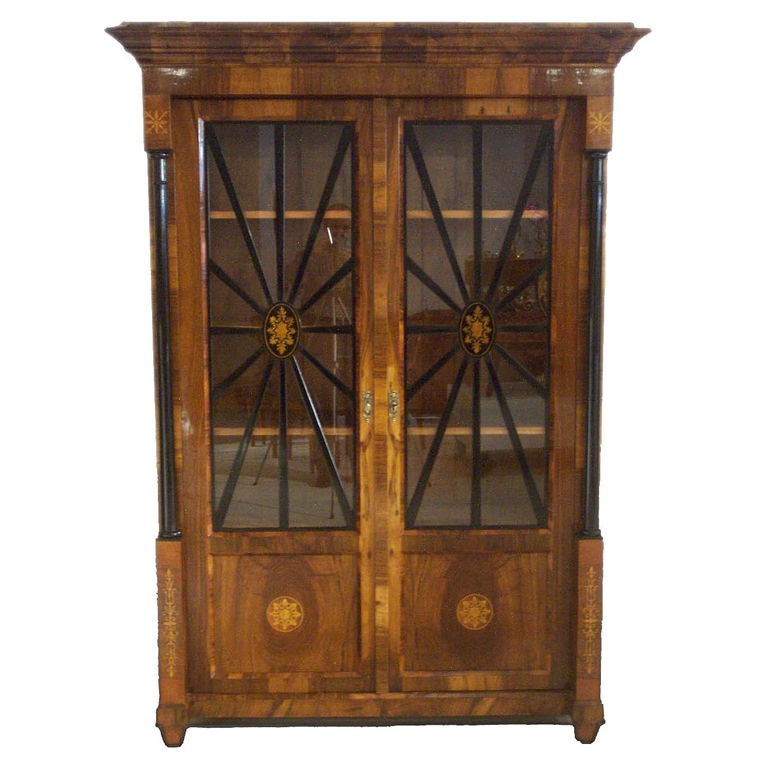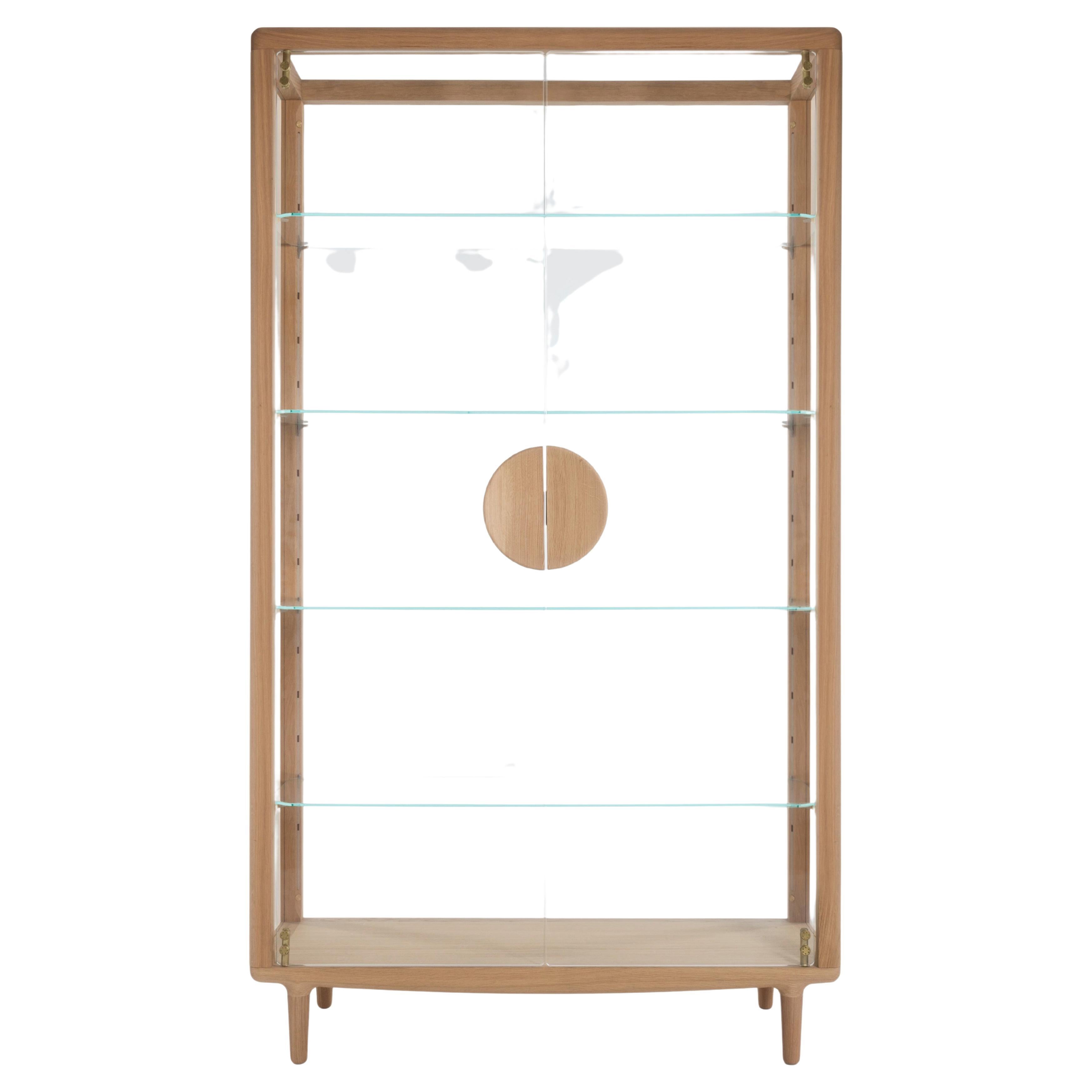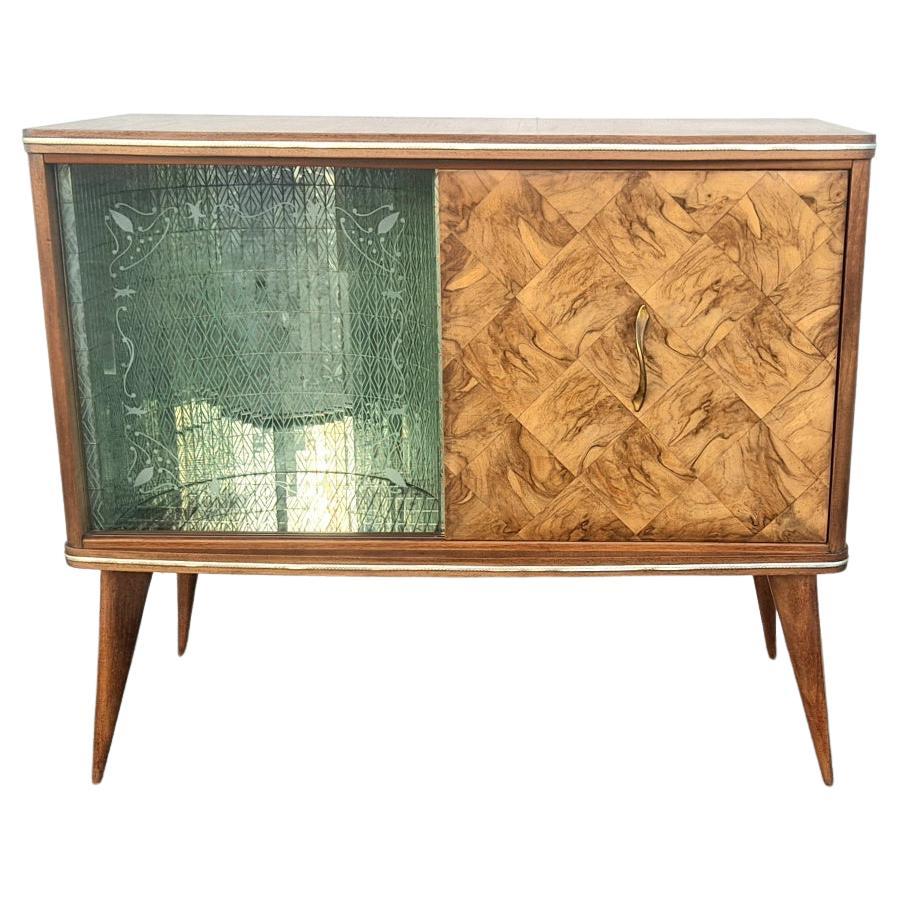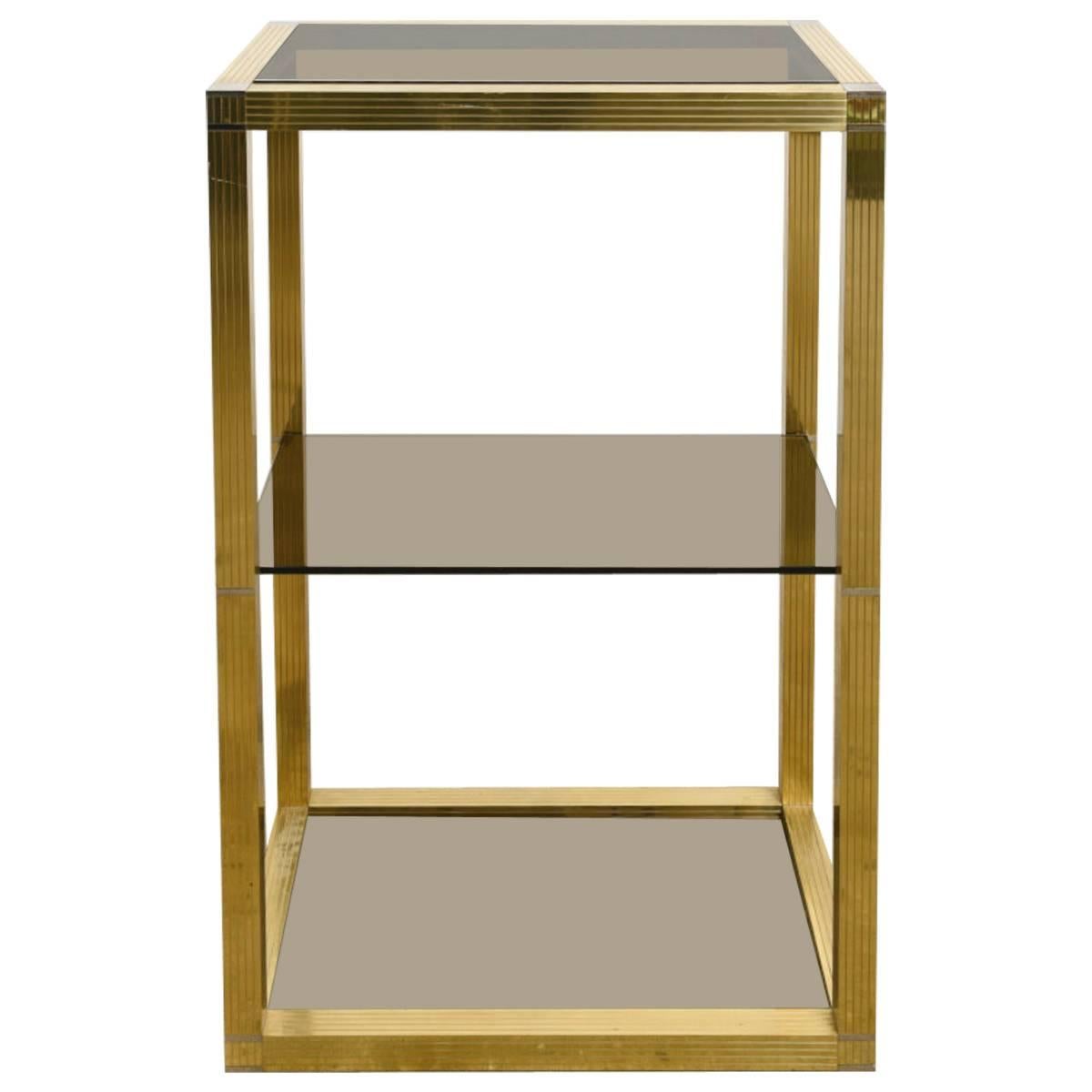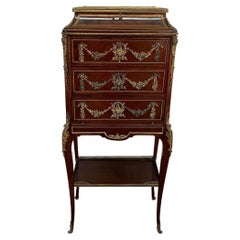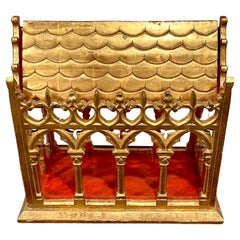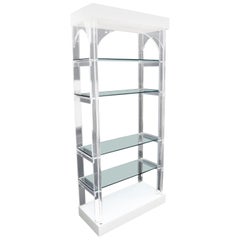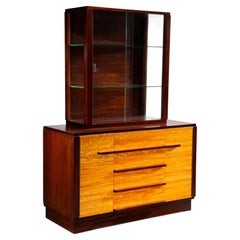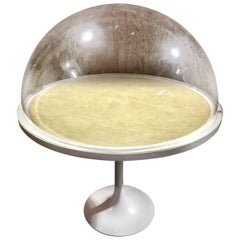
Saarinen Lucite Domed Vitrine, NY Worlds Fair, 1964, Restored
View Similar Items
Want more images or videos?
Request additional images or videos from the seller
1 of 5
Saarinen Lucite Domed Vitrine, NY Worlds Fair, 1964, Restored
About the Item
- Similar to:Eero Saarinen (Designer)
- Dimensions:Height: 48 in (121.92 cm)Width: 42 in (106.68 cm)Depth: 42 in (106.68 cm)
- Style:Mid-Century Modern (Of the Period)
- Materials and Techniques:
- Place of Origin:
- Period:
- Date of Manufacture:1960s
- Condition:Wear consistent with age and use. Professionally repainted and newly upholstered display platform. Lucite is in good condition, minor scratches, can be polished out.
- Seller Location:West Palm Beach, FL
- Reference Number:Seller: 000051561stDibs: LU259238324413
About the Seller
5.0
Platinum Seller
These expertly vetted sellers are 1stDibs' most experienced sellers and are rated highest by our customers.
Established in 1996
1stDibs seller since 2017
1,087 sales on 1stDibs
Typical response time: 1 hour
More From This SellerView All
- Louis XVI Style Ormolu Mounted Kingwood Vitrine, Paris, circa 1900Located in West Palm Beach, FLLouis XVI style Ormolu mounted kingwood Vitrine, Paris, circa 1900, Beautiful quality, with lift top beveled glass top, the case fitted with fo...Category
Early 20th Century French Louis XVI Vitrines
MaterialsOrmolu
- 19th Century French Gothic Cathedral Giltwood & Glass Reliquary / VitrineLocated in West Palm Beach, FL19th Century French gothic cathedral giltwood & glass reliquary / vitrine France, mid-19th century. A reliquary is a container for the display an...Category
Mid-20th Century French Gothic Revival Religious Items
MaterialsGlass, Giltwood
$4,600 Sale Price20% Off - Art Deco Chinese Motif Display Case, From Cartier NYC Showroom, Circa 1920sLocated in West Palm Beach, FLArt Deco Chinese Motif Display Case, From Cartier NYC Showroom, Circa 1920s Cartier showroom store fixture, Provenance by Repute, Saved from the refuse pile of a 1960s renovation ...Category
20th Century American Art Deco Vitrines
MaterialsGlass, Wood
- Pair of English Victorian Glass Display Domes/ Cloches with StandsLocated in West Palm Beach, FLPair of English Victorian glass display bell domes/ Cloches with stands England, Circa 1880s Each dome of good size, fitted with removable ha...Category
Late 20th Century English High Victorian Vitrines
MaterialsFabric, Glass, Wood
- Tiffany & Co. Sterling Flatiron Building NY NY, BookmarkBy Tiffany & Co.Located in West Palm Beach, FLTiffany & Co. Sterling Flatiron Building NY NY, Bookmark USA, Circa 1980s Stamped Tiffany & Co. .925 Celebrate the architectural marvel of New York City's iconic Flatiron Building with this exquisite Tiffany & Co. sterling bookmark from the 1980s. Stamped with the authentic Tiffany & Co. hallmark and crafted from high-quality .925 sterling silver, this bookmark exudes elegance and craftsmanship. Measuring 4 inches in length and 1.25 inches in width, this bookmark is a perfect blend of functionality and artistry. Weighing 16 grams, it feels substantial yet comfortable in hand. The real showstopper is the three-dimensional trompe l'oeil enameled image of the Flatiron Building adorning the bookmark. This Belle Epoque architectural...Category
20th Century American Belle Époque Sterling Silver
MaterialsSterling Silver
$380 Sale Price20% Off - Antique Patinated & Engraved Bronze Mughal Domed BoxLocated in West Palm Beach, FLAntique Patinated & Engraved Bronze Mughal Domed Box India, 20th century A fabulous Indo-Islamic architectural circular domed box, with elaborate front...Category
20th Century Indian Decorative Boxes
MaterialsBrass
You May Also Like
- Lucite and Glass Étagère VitrineLocated in Dallas, TX1970s tall standing shelves unit made of Lucite and glass. Bookcase. Solid, 2" x 4" beveled Lucite supports with five glass shelves. Shelves are .5" thick.Category
Vintage 1970s American Vitrines
MaterialsGlass, Lucite
- Arc Top Lighted Lucite Étagère VitrineBy Karl SpringerLocated in Rockaway, NJMid-Century Modern all Lucite and white acrylic five shelves étagère vitrine wall unit floor lamp, light fixture.Category
20th Century American Mid-Century Modern Vitrines
MaterialsLucite
- Art Deco Signed Wolfgang Hoffmann for Romweber World's Fair Display CabinetBy Romweber Furniture Co., Wolfgang HoffmannLocated in Forney, TXA rare and important Art Deco period Century of Progress Display Cabinet designed by Wolfgang Hoffmann (Austrian, 1900-1969) for Romweber Company, Batesville, Indiana, United States of America. circa 1933-1936 Created for the 1933 Chicago World's Fair, one piece design, having a rectangular showcase top with glass panel sides and a pair of sliding glass doors, over solid wood chest fitted with four drawers affixed with horizontal pulls, flanked by cabinet doors, opening to shelved interior. Rosewood, mahogany, richly figured blonde - golden birch or primavera, and glass. Signed, original label to drawer interior, featuring 1933 World's Fair mark impressed. **Please note, at the time of writing this, a matching sideboard - buffet (shown in last photo) is currently available separately** Provenance / Acquisition: Property from the important and iconic collection of Mr. James I. Rafftesaeth Jr., Dallas, Texas Acquired from highly reputable auction house, Heritage Auctions, Dallas, Texas. 2022 Design Signature Auction catalog #8091 History: Wolfgang Hoffmann was born in Vienna, Austria in 1900. He is the son of famous architect, pedagogue and Wiener Werkstatte cofounder, Joseph Hoffmann (1870-1956). Early on, following his father’s s interests, he was trained in the decorative arts and design. Wolfgang Hoffmann once reminisced, “I spent eight years at the Realschule, then three years went to a special architectural school, where I perfected my technical knowledge of architecture and general construction. From this school, I was graduated to the Kunstgewerbeschule [Studying under Oskar Strnad and Josef Frank in Vienna]. After finishing this school, I had one and a half years of practical in a well known architect’s office. Thereafter I worked in my Father’s office for two years”. Hoffmann met his future wife, Polish immigrant Pola (1902-1984) when they were both studying at the Kunstgewerbeschule. Joseph Urban (1872-1933) was needing an assistant for his architectural business in New York and contacted his friend and colleague, Joseph Hoffmann in Vienna. Hoffmann recommended his son Wolfgang. Urban hired him and sent a first class passage ticket to Vienna for Wolfgang to travel to New York. Wolfgang married Pola and traded his ticket for two tickets to America in steerage, arriving in New York City in December of 1925. Leaving the Urban office after nine months, Wolfgang and Pola formed an independent design practice with offices on Madison Avenue in Manhattan with the purpose of creating contemporary interiors and industrial designs. Early work included theaters, stores, and apartments mostly in New York City. During the late 1920’s and early 1930’s the Hoffmanns designed custom furniture for private clients. Some of these examples were shown in the February 1929 issue of House and Garden. Curiously, the examples’ design was attributed to Urban and the production to Pola Hoffmann, Inc. Established in the fall of 1928, the American Designers’ Gallery was “devoted exclusively to showing objects and interiors for practical use… by fourteen American architects and designers”. Its members included the Hoffmans and Urban as well as ceramist Henry Varnum Poor (1888-1971), architect Raymond Hood (1881-1934), artist designer Winold Reiss (1886-1953), graphic designer Lucien Bernhard (1896-1981), decorator Donald Deskey (1894-1989), and architect Ely Jacques Kahn (1884-1972). The Hoffmanns’ work was included in the American Designers’ Gallery’s two showcase events, its 1928 and 1929 exhibitions. Their dining alcove at the 1929 event featured a bench with a dinette table and two chairs in American walnut designed by Wolfgang and a rug by Pola. Lucien Bernhard, fellow Austrian immigrant who settled in New York a year before the Hoffmanns, operated the gallery and decorating service Contempora with Munich resident Bruno Paul (1874-1968). The Hoffmanns, occasionally participating with Contempora, designed a number of outstanding interiors, including the constructivist living room of 1930 for Mrs. O.R. Sommerich at 40 East 66th street. In 1934, Donald Deskey commissioned Wolfgang to design birchwood furnishings for the eclectic apartment at 625 Park Avenue belonging to Helena Rubinstein. In 1931, Wolfgang exhibited his work at the Pennsylvania Art Museum and the Museum of Modern Art in New York City. The same year, with Kem Weber (1889-1963) he organized the second and final exhibition of AUDAC- “Modern Industrial and Decorative Arts”- at the Brooklyn Museum. At this event, the Hoffmanns showed the dining room previously included in the American Designer’s Gallery’s 1929 exhibition in the Chase Bank Building lobby at 145 West 57th Street in Manhattan. In 1932 Wolfgang was asked to assist Urban in developing the color scheme for the 1933-34 Chicago World’s Fair “A Century of Progress”. He was also commissioned to design the interior and furniture for the fair’s lumber industries house. There he executed its living and dining rooms furnished by Kroehler Manufacturing Company of Chicago; the boys’ room by Shower Brothers...Category
Early 20th Century American Art Deco Vitrines
MaterialsGlass, Mahogany, Rosewood
- Corner Vitrine by Belgo Chrom, Glass and LuciteBy Belgo ChromeLocated in Antwerp, BECorner vitrine by Belgo Chrome. A spectacular Belgo Chrom showcase with glass at the sides, lucite door, lucite pillars left and right, lucite shelves inside and also lighting. Above...Category
Late 20th Century Belgian Modern Vitrines
MaterialsGold Plate, Chrome
- Early 20th Century English Inlaid Walnut Elegant Vitrine, RestoredLocated in Casale Monferrato, ITElegant english vitrine. Simple and linear line embellished with a delicate inlaid decoration in the wood. On the front, the doors have glasses with an English frame. The glasses are...Category
Vintage 1920s English Vitrines
MaterialsWalnut
- American Arch Shape Lucite, Mirror & Oak Wood Vitrine, Showcase, Display CabinetLocated in Miami, FLMid-Century Modern two piece arched Lucite top Vitrine, showcase, bookshelf made in America 1980 with a blonde Oak Wood Cabinet Base. Features a mirrored Back and 2 tier clear Lucit...Category
Vintage 1980s American Mid-Century Modern Vitrines
MaterialsChrome
$2,963 Sale Price24% Off
